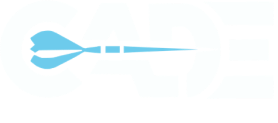CARD Guidance
Cost Analysis Requirements Description (CARD) Guidance
The CARD document is a complete, detailed description of a DoD program for use in preparing an independent cost estimate (ICE), program office estimate (POE), DoD Component cost estimate (CCE), DoD Component cost position (CCP), or other cost estimate, as required. The foundation of a sound cost estimate is a well-defined program, and the CARD is used to provide that foundation. The CARD succinctly describes the key technical, programmatic, operational, and sustainment characteristics of a program, along with supporting data sources, and provides all of the program information necessary to develop a cost estimate. By using the CARD, different organizations preparing cost estimates can develop their estimates based on the same understanding of program requirements. As a program evolves and its costs and funding needs change, the CARD, as a living document, evolves with it.
This CARD guidance strikes a balance between competing objectives: the need for detailed data for program cost estimating purposes and the workload of program offices managing acquisition programs. A balance is struck through a focus on workbook templates to facilitate standardized program data collection supplemented as appropriate with a reduced scope narrative section. This format allows for quick updating of primarily tabular data as opposed to the lengthy narrative documents currently submitted. CARDs will be stored electronically by CAPE on the Cost Assessment Data Enterprise website for access by all members of the DoD cost community.
Prior CARDs were required to support preparation of cost estimates at program milestone decisions. The extensive use of workbook templates supported rapid revisions of these CARDs by updating only changed program parameters from the previous submission.
Acquisition Category (ACAT) I programs must follow the format specified in the attached guidelines and are required to submit CARDs.
This guidance document provides CARD preparation and content guidelines generally applicable to all DoD acquisition programs. As a guidance document, however, it cannot prescribe the process and CARD content for every scenario in the inception-to-retirement lifecycles of all DoD programs. It is critical for the interests of the DoD, considering the importance of sound cost estimates to the Defense Acquisition System and DoD programming and budgeting processes, that acquisition program offices act on the intent of these guidelines. Program offices must demonstrate a bias towards providing more rather than less description and data, and seeing more rather than fewer occasions as meriting a CARD update or expansion.
The CARD is composed of a narrative and a workbook. Ideally, the narrative of the CARD, not including tables and figures, should be approximately 20 pages in length. To maximize efficiency, template workbooks for each commodity, tailored to collect significant portions of data on the general program and specific technical, operations and support, and disposal information, have been defined.
- Guidelines for the Preparation and Maintenance of the CARD Narrative
- Guidelines for the Preparation and Maintenance of the CARD Narrative: Tailored for the Software Acquisition Pathway (SWP)
CARD Tables
The CARD Tables describe the key technical, programmatic, and operational characteristics of an acquisition program using concise tabular entries. These tables amplify the CARD narrative to provide the minimum essential information necessary to support the preparation of life-cycle cost estimates.
The document, “Guidelines for the Preparation and Maintenance of CARD Tables”, provides guidance for the preparation and maintenance of CARD Tables pursuant to “Guidelines for the Preparation and Maintenance of the Cost Analysis Requirements Description” and is further amplified by responses to frequently asked questions. The CARD Table Improvements presentation describes the most recent updates to the CARD table templates.
- Guidelines for the Preparation and Maintenance of CARD Tables
- FAQ
- CARD Table Improvements (12March2019)
These commodity CARD files should be considered as your starting point when building a new CARD.
2022 DD Form 2794 CARD Tables by Commodity
| CARD Table | Ties to MIL-STD-881F | |
|---|---|---|
| 1 | Aircraft Systems | Appendix A Aircraft Systems |
| 2 | Avionics Subsystems | Appendix B Electronic or Generic Systems |
| 3 | C4I Electronics Systems/Subsystems | Appendix B Electronic or Generic Systems |
| 4 | C4I Radar System/Subsystems | Appendix B Electronic or Generic Systems |
| 5 | Electronic Warfare Subsystems | Appendix B Electronic or Generic Systems |
| 6 | Electronic/Generic Systems/Subsystems | Appendix B Electronic or Generic Systems |
| 7 | Engine Subsystems | Appendix B Electronic or Generic Systems |
| 8 | Generic Subcontractor System/Subsystems | Appendix B Electronic or Generic Systems |
| 9 | IS-DBS (Information System-Defense Business System) | Appendix J Information Systems/Defense Business Systems |
| 10 | Launch Vehicle Systems | Appendix I Launch Vehicle Systems |
| 11 | Missile-Ordnance Systems | Appendix C Missile/Ordnance Systems |
| 12 | Space Systems | Appendix F Space Systems |
| 13 | Strategic Missile Systems | Appendix D Strategic Missile Systems |
| 14 | Sustainment | Refer to Appendix L |
| 15 | UAV Systems | Appendix A Aircraft Systems |
| 16 | Ground Vehicle Systems | Appendix G Ground Vehicle Systems |
| 17 | Sea Systems | Appendix E Sea Systems |
CARD Training
While it will be up to each Service on how to conduct the necessary training within their respective Service, the current version of the "CARD Training" slides and narrative that the Air Force has generated is referenced below.
To contact Service and CAPE POCs, email the CADE Help Desk.

 CADE Portal
CADE Portal
 FACADE
FACADE